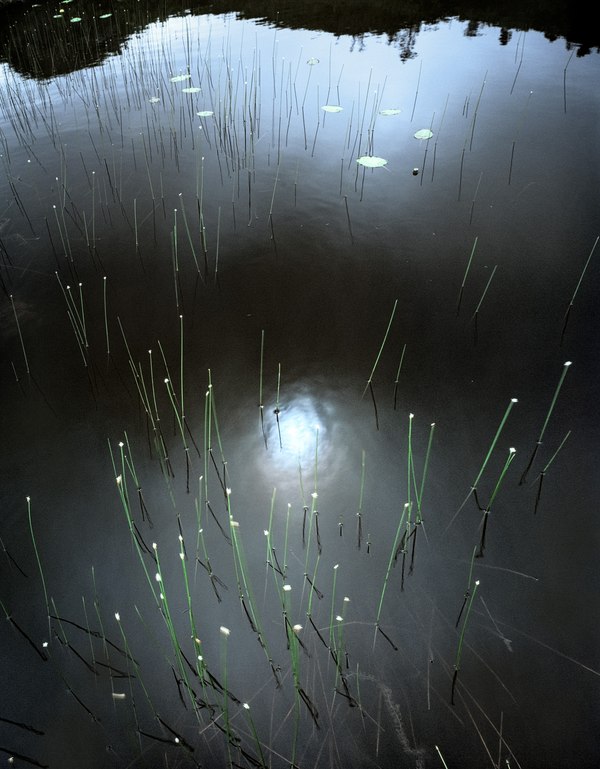On a hike to Barachois Falls near the fishing port of Rose Blanche on Newfoundland's rugged south coast, I felt the sun occasionally break through, warming the open country as it vied with cold, moist winds. Rising off the nearby Atlantic Ocean, the fog spread across the rolling barrens. The broader vista darkened and obscured; I focused on the details of the landscape, stopping at a pond where swaying sedges caught my attention, their tips budding with glowing cotton tufts.
Headlands rise abruptly from the sea along this coastal wilderness, and its rivers are short and turbulent. The landscape encompasses outcroppings of granite, boreal forests, heaths of sphagnum moss, and peat bogs interspersed with ponds and marshes. Once densely covered by balsam fir, European settlers clear-cut the island's south coast beginning 300 years ago. In the late 19th century, the land was subjected to frequent fires brought on by embers spread from the coal-fired locomotives running along the newly constructed narrow-gauge railroad crossing Newfoundland, delaying the forests' return for generations.
During the short summers, bogs fill with winter's runoff, blossoming with lily pads, reeds, and sedges. In this image, a blackwater pond mirrors solitary stands of spruce and larch, and scudding clouds filter the skylight. As a natural polarizer, the dark water intensified the sun's rich opalesque reflection.
Location research and commentary by James Baker.

